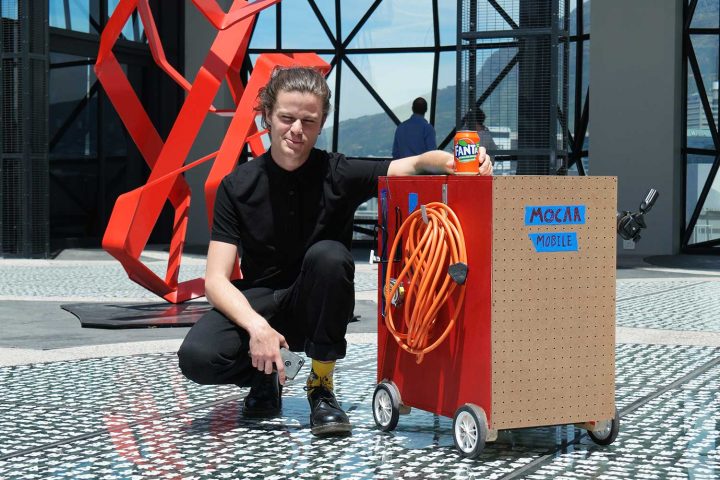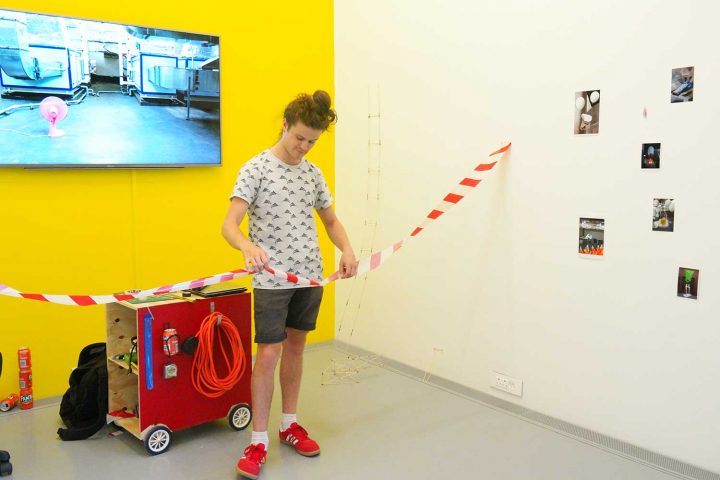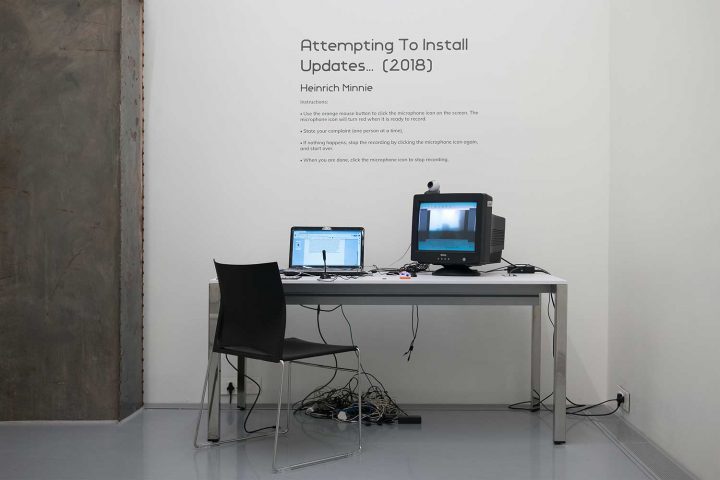Zeitz MOCAA opened in September 2017 to rave architectural reviews and a barrage of institutional critique. Like a used-car salesperson talking while pointing to a seemingly different vehicle, what MOCAA claimed to be and provide did not align with what the museum is and does provide. It sold itself as a public museum of contemporary African excellence while shirking the kind of ethics expected of a public museum. Young curators with no museum experience were pitted against a governance structure unable to meet its responsibilities.
How does a curator, like Zeitz MOCAA’s Michaela Limberis, make an intervention from within the museum? They find allies, or in the more reactionary grammar of the MOCAA website, “collaborators.” The result is “The Main Complaint,” which is otherwise refreshing in its curatorial temperament and content.
The exhibition harnesses technology as a conduit. Two monitors present a “screen takeover” in the vein of Instagram takeovers, displaying artworks selected by publicly nominated curators. The process is ongoing.
Works commissioned and selected by Limberis anchor the exhibition’s primary space in the museum. Bonolo Kavula’s immersive video Messy (2018) speaks the language of music videos to introduce a new avatar for the artist, the Black Mona Lisa — a sardonic criticism of the commodification and/or disempowerment of black women.
The video Ode to Institutional Critique (2018) by Khanya Mashabela records typed letters becoming words in a word-processor document. We read a love letter articulating anxieties around conflicts of interests, while listening to the robotic, ambivalent voice of Emma, a British English digital text-to-speech program that reads aloud the words projected onto the screen.
Public residencies are embedded in the museum and flitter on Instagram, and their residue has settled into the primary exhibition space. Some artworks reference literal aspects of the institutional critique MOCAA has been subject to. Bert Pauw’s intervention Quarter Square Cube (2018) produced a silent auction selling off MOCAA floor space and digital images of oversized packets of Sta-soft fabric softener nailed to the brutal curves of MOCAA’s entrance foyer. “The materials are not absolutist,” says Pauw. Neither is this exhibition, making “The Main Complaint” transferable to museums globally.





